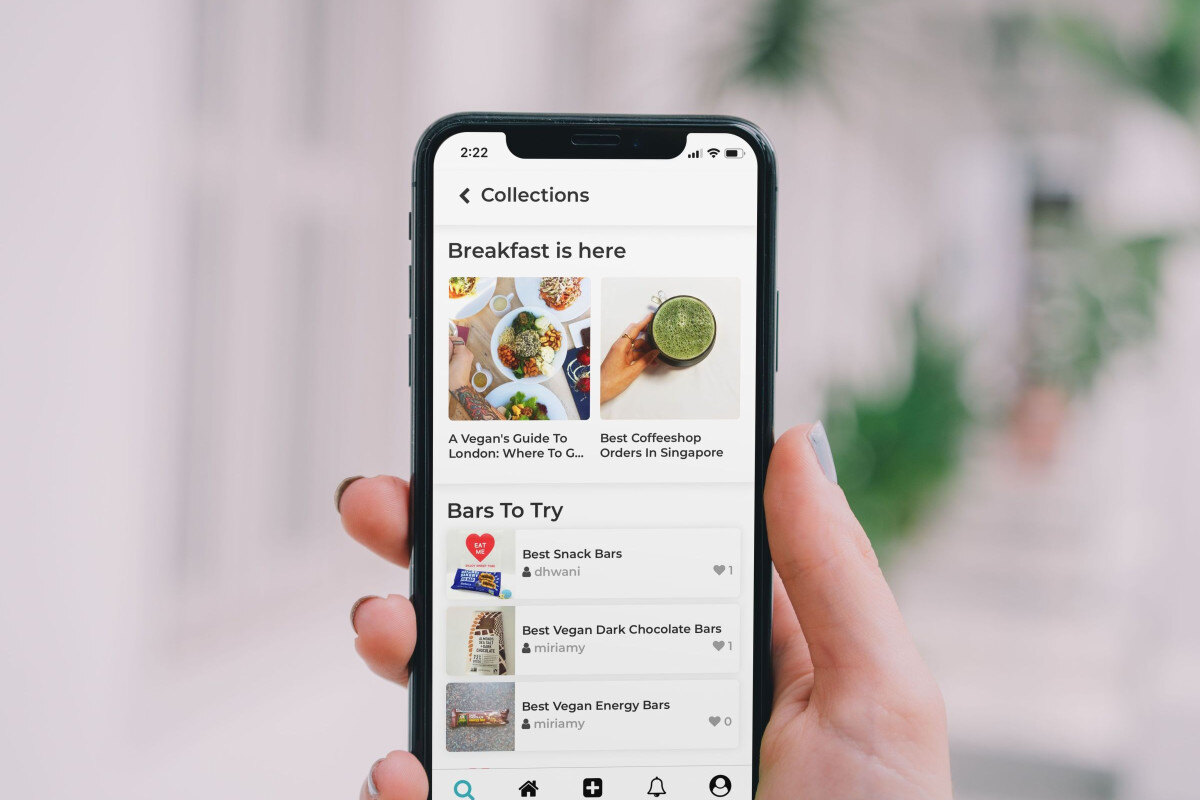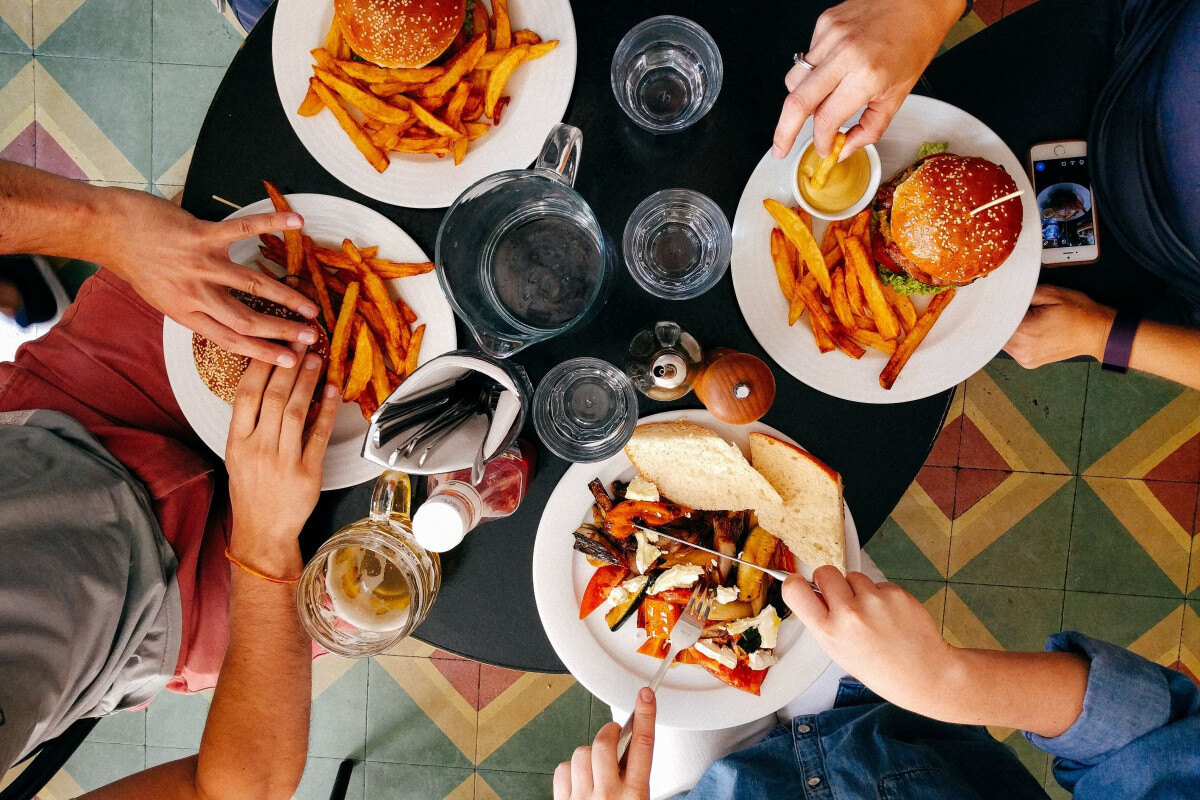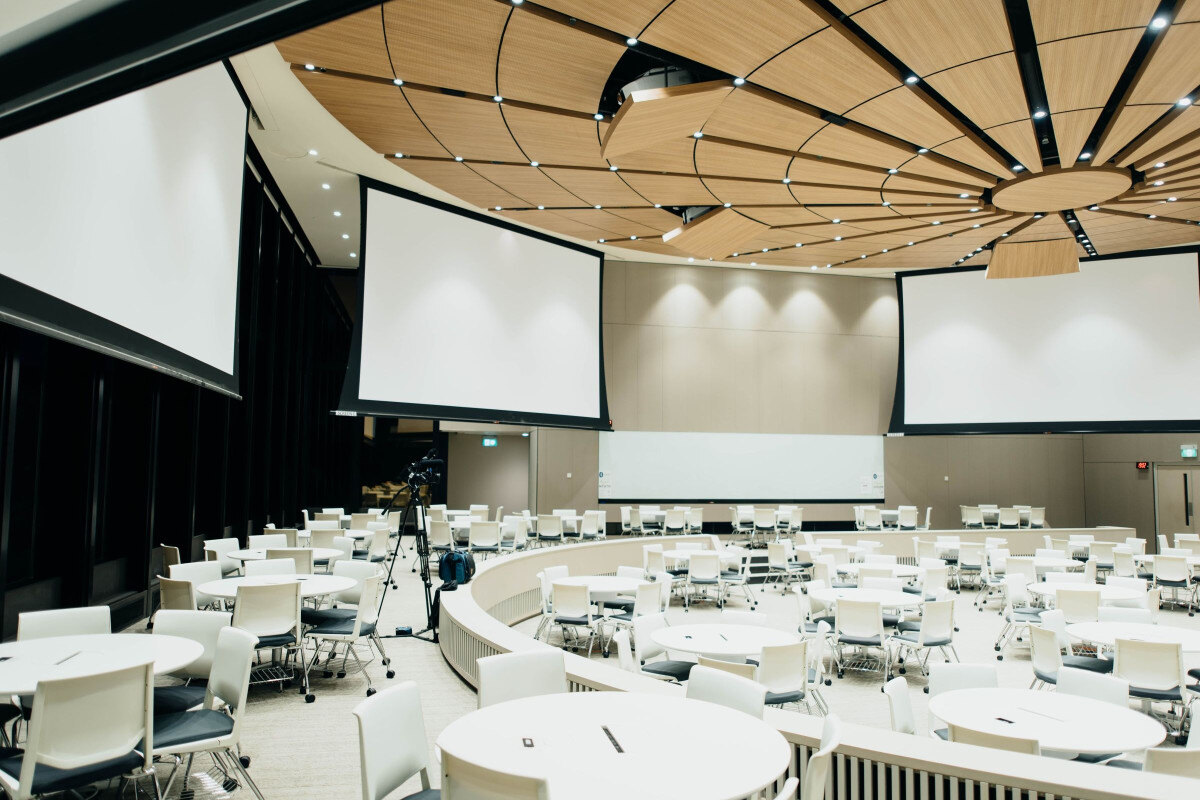Why Is Customer Loyalty Important? Diving Deep Into the Topic
If you’ve been in business for a while, you’ll understand that attracting new customers is normally more expensive than retaining existing ones. This...
Platform
Combining online ordering, loyalty, omnichannel messaging, AI insights, and payments in one platform. Paytronix delivers relevant, personal experiences, at scale, that help improve your entire digital marketing funnel by creating amazing frictionless experiences.
A Complete Customer Experience Platform
Online Ordering
Acquire new customers and capture valuable data with industry leading customization features.
Loyalty
Encourage More visits and higher spend with personalized promotions based on individual activity and preferences.
CRM
Build great customer relationships with relevant personal omnichannel campaigns delivered at scale.
Artificial Intelligence
Leverage the most data from the most customer transactions to power 1:1 marketing campaigns and drive revenue.
Payments
Drive brand engagement by providing fast, frictionless guest payments.
Solutions
We use data, customer experience expertise, and technology to solve everyday restaurant and convenience store challenges.
Contactless Experiences
Accommodate your guests' changing preferences by providing safe, efficient service whether dining-in or taking out.
Customer Insights
Collect guest data and analyze behaviors to develop powerful targeted campaigns that produce amazing results.
Marketing Automation
Create and test campaigns across channels and segments to drive loyalty, incremental visits, and additional revenue.
Mobile Experiences
Provide convenient access to your brand, menus and loyalty program to drive retention with a branded or custom app.
Subscriptions
Create a frictionless, fun way to reward your most loyal customers for frequent visits and purchases while normalizing revenues.
Employee Dining
Attract and retain your employees with dollar value or percentage-based incentives and tiered benefits.
Order Experience Builder
Create powerful interactive, and appealing online menus that attract and acquire new customers simply and easily.
Loyalty Programs
High-impact customizable programs that increase spend, visit, and engagement with your brand.
Online Ordering
Maximize first-party digital sales with an exceptional guest experience.
Integrations
Launch your programs with more than 450 existing integrations.
Loyalty Programs
Deliver the same care you do in person with all your digital engagements.
Online Ordering
Drive more first-party orders and make it easy for your crew.
Loyalty Programs
Digital transformations start here - get to know your guests.
Online Ordering
Add a whole new sales channel to grow your business - digital ordering is in your future.
Integrations
We work with your environment - check it out.
Company
We are here to help clients build their businesses by delivering amazing experiences for their guests.
Meet The Team
Our exceptional customer engagement innovations are delivered by a team of extraordinary people.
News/Press
A collection of press and media about our innovations, customers, and people.
Events
A schedule of upcoming tradeshows, conferences, and events that we will participate in.
Careers
Support
Paytronix Login
Order & Delivery Login
Resources
Learn how to create great customer experiences with our free eBooks, webinars, articles, case studies, and customer interviews.
See Our Product In Action
E-Books
Learn more about topics important to the restaurant and c-store customer experience.
Webinars
Watch brief videos for tips and strategies to connect with your customers.
Case Studies
Learn how brands have used the Paytronix platform to increase revenue and engage with guests.
Reports
See how your brand stacks up against industry benchmarks, analysis, and research.
Blog
Catch up with our team of in-house experts for quick articles to help your business.
Are you overlooking these 8 reasons to sell mobile-first gift cards?
12 min read
May 25, 2024

Your customers live on their phones (the average American spends a whopping 4.5 hours on their phone daily). Why not put your restaurant in their hands with a top-tier loyalty app?
Allowing your customers to make reservations, view menus, order, and pay for meals from the palm of their hands isn’t the future anymore—it's an everyday given. If you aren’t offering this to your own audience, you’re quickly falling behind.
Not only that, restaurant loyalty apps give you additional benefits like:
Effective loyalty apps give customers a better experience and increase your customers’ engagement, therefore becoming “sticky.” Let's look at how to build a sticky experience with these tips.
For your loyalty app to be effective, it has to be usable. Ensure your loyalty app has a user-friendly design and is easy to navigate. Don’t make your text or images too small, either; customers don’t want to pinch or scroll to get the information they need.
Integrate your app with other technology like social media or digital wallets. These integrations allow customers to easily pay for their purchases in the app and share offers and programs with their online social circles.
Consider The Original ChopShop as an example. This salad and sandwich restaurant focused on convenience for its customers by building a way to pay ahead through its loyalty app. As a result, The Original ChopShop’s customers saved time, and the restaurant chain saw over 60,000 app downloads during a four-week holiday campaign.
Personalization also plays a significant role in the use of loyalty apps. Consumers want offers and contests based on their individual interests. Use your loyalty data to segment your customers by behavior or interest, and don’t just do this once—make it a regular activity driven by your growing business.
Consider this example: you’re an ice cream retailer with a segment of customers who haven’t purchased in 30 days. Use personalization like a limited-time discount based on the last item they bought to encourage this segment to come back and make a purchase.
Don’t overlook these important loyalty app actions that can increase “stickiness” too:
When evaluating your options for loyalty apps for your restaurant, it’s important to assess the key features that can impact customer retention directly. Here are the must-have capabilities you should look for:
Choosing the best loyalty app-building platform can be overwhelming, especially if you’re new to the search. Learning from some of the most widely used loyalty apps makes it easier to choose the platform you’ll build your own loyalty app in. Here are six examples:
1. Starbucks
Starbucks has one of the most downloaded loyalty apps, one reason being that customers can also use it to order and pay. Users receive points for free food or drinks when making enough purchases.
2. Panera
Panera’s loyalty app allows users to order, pay, and pick up their favorite food seamlessly. They make it simple to pay by integrating Google and Apple Pay, or users can add a credit card to make payments easy.
Many consider Panera’s reward structure to be even more motivating than Starbucks’, and they even give you a free pastry when you sign up for the app. Not only does Panera offer customers rewards on items they frequently buy, it also suggests similar items customers may like in addition to their usual order.
Panera also offers MyPanera, which allows members to select their rewards from multiple options based on customer preferences instead of being offered a single-preselected reward like most reward programs. Due to its customer loyalty program, Panera found that over half of Panera transactions in 2022 were from MyPanera members. Further, Panera found that MyPanera members visit more often and spend more than those who were not members of the loyalty program.
3. Chick-fil-A
Chick-fil-A's app stands out because the reward structure is based on total spend. That means users rack up points faster than other loyalty programs. This restaurant chain has loyalty tiers that offer better rewards, perks, and bonuses. Chick-fil-A's app also has the unique option to skip the line and order straight to your table.
4. Dunkin Donuts
Dunkin Donuts knows people don’t like waiting in lines. To capitalize on this, the restaurant uses its DD Perks app to order ahead and skip the line. Dunkin Donuts DD Perks also gives members a free gift card on their birthdays and their partnership with Idle-Empire also lets customers earn points by playing games and completing surveys.
5. Chipotle
The Chipotle Rewards program uses gamification to keep its customers engaged and happy. Customers earn badges for completing challenges. Like Dunkin Donuts, Chipotle also offers members a surprise on their birthdays. Chipotle also offers members to redeem rewards for merchandise in addition to free food.
6. KFC
KFC in the UK and Ireland wanted to gamify its rewards experience. To do this, they launched a new version of KFCs Rewards Arcade. The Rewards Arcade lets customers instantly win rewards by completing games. For every certain amount spent, customers would receive an invitation to play a 3D mini game to win 12 prizes. This increased KFC’s reward redemption by 40%.
Paytronix puts your restaurant in the palm of your guests’ hands. Expand your customer outreach and grow your loyalty program with prompt promotions, responsive features, and an integrated all-in-one platform.
Let’s break down the main benefits and how they can contribute to growing your business.
A major advantage of using Paytronix apps is the ability to send targeted and personalized 1:1 messages to customers. We use customer data to engage your local guests through SMS, push notifications, and geofencing.
Whether for birthday rewards or a limited-time offer, these personalized marketing messages create meaningful connections that make customers feel like they’re valued.
Paytronix works with your existing third-party delivery apps so your customers can order, pay, and pick up food all within one single platform. It simplifies restaurant operations and the customer experience, working with restaurants of all sizes. Paytronix makes it simple and easy to connect to your existing systems for fast, easy online ordering and payment solutions.
To truly understand your customer’s behavior, preferences, and spending patterns, we offer real-time AI-driven insights. This data lets you create a successful personalized loyalty program that encourages repeat customers and guest engagement. Using these insights, your restaurant can fine-tune its marketing strategies and create smart campaigns that resonate with only your most valuable customers.
Paytronix scales to accommodate growing restaurant businesses of all sizes. Whether it’s your first restaurant loyalty program or you’re looking to expand your existing one alongside your restaurant, Paytronix provides everything you need for customer engagement. Small businesses benefit from simplified loyalty features, while larger brands harness omnichannel marketing and advanced segmentation.
Complementing traditional customer loyalty programs, Paytronix offers the option to create subscription models. These programs reward your most loyal customers and encourage multiple return visits. Subscriptions help normalize revenue streams and are useful for businesses looking to foster deeper engagement with existing customers and increase customer lifetime value.
Choosing an app that integrates with your existing systems and helps you meet your goals is critical. Once you’ve selected an app, plan your integration strategy. Decide how to connect your apps to your existing business systems and note that this choice may require the use of one or more application programming interfaces (APIs) or reconfiguring your entire system.
Before you begin the integration process, test the app to ensure it does what you need it to. Once you’ve integrated your app with your existing systems, monitor it to ensure that it’s still working as intended.
Prioritize training your staff during the integration process. You won't meet your goals if your staff doesn’t know how to use the technology.
Properly train your staff by:
You’ve chosen your loyalty app provider, integrated it with your systems, and trained your staff. Now, it’s time to share it with your customers! These four strategies will help get the word out and get your customers engaged:
Once you’ve decided on your loyalty app technology and your offers and rewards, it’s time to launch your loyalty app and program. Here are some examples of successful app campaigns to inspire you.
1. Starbucks
Starbucks used gamification to encourage app downloads and user-generated content (UGC). The coffee brand promoted downloads by adding an inconspicuous CTA to download the app in their social bios.
2. Zalando
The fashion retailer added “Use App” buttons to its social media profiles. This method is effective because their audience is already checking out the brand’s social content.
3. Warby Parker
The glasses retailer boosted app downloads and usage by offering a value-add—a virtual try-on feature. This strategy was so successful because it alleviated a common customer pain point—not knowing what glasses look like when wearing them without otherwise visiting a storefront.
Data is already driving the future of digital loyalty programs. Real-time data-driven insights will influence customer engagement strategies. Brands will increase their use of AI to customize campaigns and rewards.
Customers expect a seamless experience regardless of where they’re interacting with your brand. As a result, more loyalty programs will begin to provide omnichannel campaigns that give customers more consistent, rewarding experiences.
The future of digital loyalty programs will go beyond rewards and points and focus on emotional loyalty, flexible redemption options, and interactive formats.
Incentivize ongoing app adoption by offering discounts on meals or free items for downloading and using the app. Keep users who downloaded your app engaged by providing new features and using in-app messages to communicate the latest offers and rewards.
Yes, loyalty programs are effective for restaurants. They encourage your diners to return by rewarding them for their visits, such as offering discounts on meals or free items after a certain number of visits. This strategy increases repeat business and builds a list of loyal customers who are more likely to choose your restaurant over competitors.
Loyalty programs also provide valuable insights into your customers’ preferences, allowing your restaurant to tailor your menu and promotions to better meet diners' needs.
To set up a restaurant rewards program, follow these steps:
To create a simple loyalty program, follow these steps:
The cost of creating and running a loyalty program ranges from a few hundred dollars to tens of thousands, depending on the complexity of the system.
If you're a small business with a limited budget, consider a simple approach like a point system that rewards customers for a specific dollar value of purchases. You’ll need to cover the cost of materials, marketing, and the cost of goods sold (COGS) for any freebies you give out, but it remains an affordable option to run.
On the other hand, if you manage a larger brand and want to invest in a more advanced program, you might consider loyalty programs with mobile apps and out-of-the-box personalization settings. These systems require a larger initial investment but can accelerate customer engagement and retention.
The best example of a successful loyalty program is Starbucks Rewards. As of 2024, the program has reached an impressive 34.3 million active members in the US, marking a 13% year-over-year growth. Members earn points on every purchase, which can be redeemed for free drinks and food items.
Starbucks uses its Deep Brew data analytics platform to customize rewards based on customer preferences, ensuring that incentives are relevant to each member. By focusing on personalized communication, Starbucks converts casual customers into die-hard fans on a regular basis, making its loyalty program one of the most imitated in the entire restaurant/food and beverage industry.
Here are five ways to get people to join your loyalty program:
Ready to create a loyalty app for your restaurant that your customers will enjoy using? Book a demo now to learn more or check out our mobile app solutions.

If you’ve been in business for a while, you’ll understand that attracting new customers is normally more expensive than retaining existing ones. This...

It’s safe to say that the modern customer is acquainted with subscription models. Streaming services and media outlets are two common subscriptions...

Corporate catering services are a key element of thousands of business events, including team lunches, client meetings, and large-scale conferences.